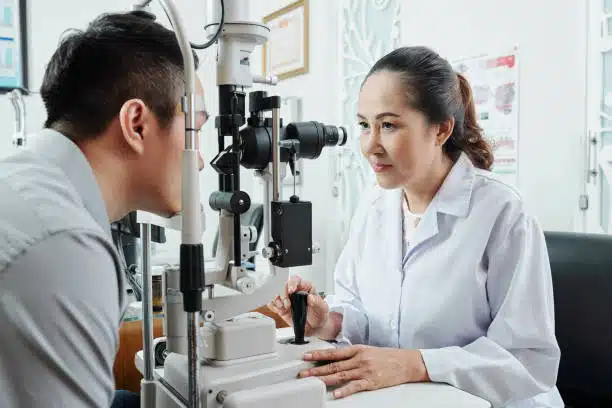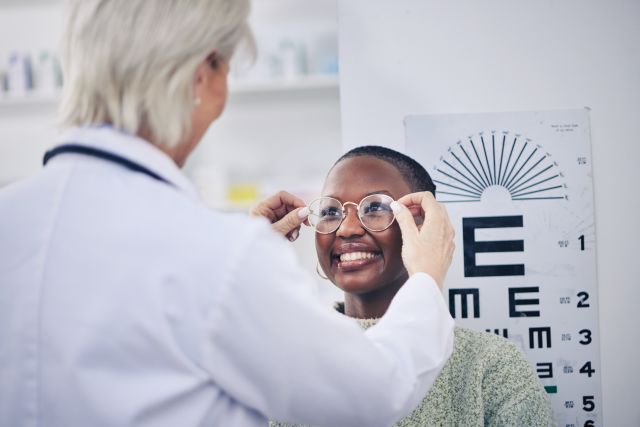Professional Eye Doctor in Riverside: Your Vision is Our Priority
Wiki Article
The Comprehensive Eye Exam: What to Anticipate During Your Visit to the Eye Physician
A visit to the eye doctor for a thorough eye exam is more than a routine exam; it is a critical action in protecting your visual wellness. From the preliminary discussion of your case history to the precision of the visual skill test, each part of the examination offers a certain function. But exactly what occurs throughout the eye health and wellness evaluation, and exactly how does it influence the prescription procedure? Comprehending these components is important for those who want to preserve optimal eyesight. As we discover each component, the relevance of follow-up referrals will additionally end up being clear.Initial Consultation
The first assessment throughout an eye examination serves as a crucial structure for comprehending a person's aesthetic health needs. This phase sets the tone for the entire evaluation process, allowing the optometrist to collect crucial details regarding the patient's clinical history, way of life, and certain vision problems. By meticulously reviewing any type of pre-existing conditions, medicines, or previous surgical procedures, the eye care professional can tailor the assessment to deal with specific requirements successfully.
In addition, the preliminary examination is a chance for individuals to voice any kind of issues or questions, fostering a collective partnership with their healthcare company. This communication not only ensures that the patient feels informed and comfy yet also equips them to take part proactively in their eye health and wellness administration. Jointly, these conversations enable the eye doctor to develop a customized exam plan, making sure optimum treatment and specific medical diagnosis.
Aesthetic Acuity Test
Starting the core elements of an eye examination, the aesthetic skill test is made to evaluate the sharpness and quality of a patient's vision. This vital evaluation assists establish how well a person can recognize letters or symbols at a standard range, commonly utilizing a Snellen graph (Opticore Optometry). The chart comprises rows of letters that lower in dimension from leading to bottom, with the patient positioned at a traditional range of 20 feet
During the examination, the client is asked to cover one eye and read aloud the smallest line of letters they can see plainly. This procedure is duplicated for the various other eye. The outcomes are tape-recorded as a fraction, with 20/20 vision indicating normal visual acuity-- where the patient can see at 20 feet what an individual with typical vision can see at that distance.
The aesthetic acuity test additionally determines prospective refractive mistakes such as hyperopia, myopia, or astigmatism, which may require rehabilitative lenses. By establishing a baseline of aesthetic performance, the examination is a vital analysis device that helps the eye care professional in developing a suitable treatment plan tailored to the individual's distinct visual requirements.
Eye Wellness Assessment
Following the aesthetic skill test, a comprehensive eye wellness analysis is performed to make certain the general wellness of the eyes. This essential segment of the eye exam involves an extensive assessment of both the outside and interior structures of the eye. The eye doctor or eye doctor begins by examining the eyelids, cornea, conjunctiva, and sclera for any signs of infection, swelling, or irregularities. Making use of specific devices like a slit light, the professional gains a multiplied view of the eye's composition, making it possible for in-depth evaluation.With the usage of ophthalmoscopy or fundus digital photography, the retina, optic nerve, and blood vessels are diligently assessed. In many situations, student extension is performed to boost exposure of the inner eye frameworks, although this may result in short-term light level of sensitivity for the patient.
In addition, intraocular stress is gauged to evaluate for glaucoma danger. This is usually done utilizing tonometry, which can find raised stress levels that could suggest possible damages to the optic nerve. Jointly, these evaluations form a detailed analysis to maintain eye health and wellness.
Refraction and Prescription
Just how does one guarantee ideal vision? A critical step lies in the procedure of refraction and obtaining an accurate prescription. Refraction is a sophisticated treatment performed by eye treatment professionals to determine the accurate lens power needed to remedy refractive errors such as myopia, astigmatism, presbyopia, and hyperopia. The goal of this treatment is to evaluate just how light bends as it travels through the eye, permitting the practitioner to determine whether corrective lenses are required for improved aesthetic acuity.Throughout the refraction process, the patient is asked to browse a phoropter, a gadget that contains different lenses. The specialist will methodically alter these informative post lenses and ask the person to compare clearness in between alternatives till the most effective possible vision is attained. This treatment is important in crafting a precise prescription that defines the suitable lens power for eyeglasses or call lenses.
The prescription originated from this treatment not only optimizes vision but likewise works as a structure for choosing suitable corrective eyeglasses. It is vital to guarantee that prescriptions are regularly updated, as modifications in vision can occur gradually, highlighting the relevance of routine eye evaluations. This meticulous focus to information aids keep clear, comfy vision in life.
Follow-Up Referrals

During a follow-up visit, the eye doctor will conduct a collection of tests to assess aesthetic skill and look for any type of changes in vision that might necessitate an upgrade to the prescription. In addition, the follow-up offers an opportunity to discuss any type of pain or issues experienced with current eyeglasses. Adjustments can be made to ensure convenience and efficacy, whether via lens adjustment or structure changes.
For clients with recurring conditions such as glaucoma, diabetes-related eye concerns, or macular degeneration, even more regular follow-ups may be required. These consultations are critical for managing and potentially reducing the progression of eye condition. Sticking to these referrals can considerably add to keeping visual health and wellness and protecting against lasting problems.
Final Thought
The thorough eye test is a vital procedure for keeping aesthetic wellness, incorporating a detailed analysis of medical background and vision worries. Secret parts consist of the aesthetic acuity examination, which assesses eyesight quality, and the eye health assessment, which examines the general condition of the eyes.A check out to the eye physician for a thorough eye examination is more than a regular exam; it is a critical action in safeguarding your aesthetic health visit this page and wellness.Kicking off the core parts see post of an eye assessment, the visual acuity examination is designed to examine the sharpness and quality of a person's vision.Following the visual skill examination, a comprehensive eye health analysis is carried out to make sure the general well-being of the eyes. These visits allow the eye treatment specialist to monitor adjustments in vision, upgrade prescriptions, and evaluate the general health of the eyes. Key elements include the visual acuity examination, which evaluates eyesight quality, and the eye health evaluation, which examines the overall condition of the eyes.
Report this wiki page